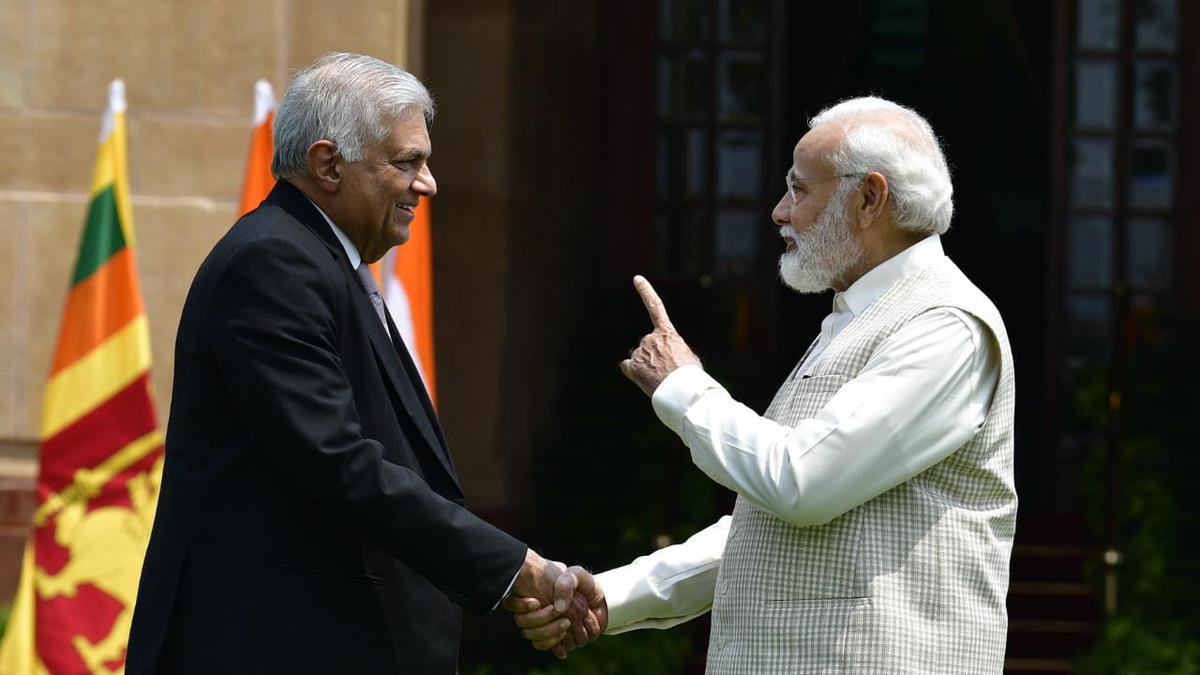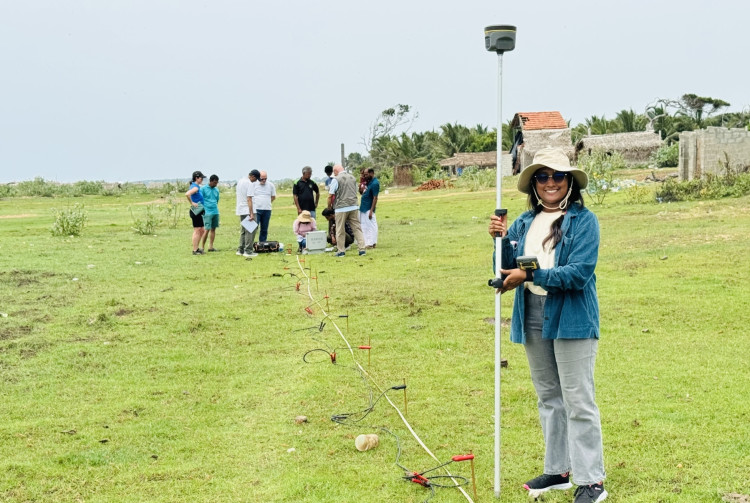For small countries, handling China is like walking on a knife’s edge — a truth proven yet again in Sri Lanka. Recently, Sri Lanka rejected a UN request to allow a research vessel into its waters, citing ongoing struggles to finalise Standard Operating Procedures (SOPs). The UN-flagged research vessel Dr. Fridtjof Nansen, operated by the Food and Agriculture Organisation (FAO), was scheduled to carry out a major marine ecosystem study in Sri Lankan waters between July 15 and August 20, 2025.
The denial of clearance to the UN vessel has reignited debate over foreign research vessels entering in Sri Lankan waters. In 2022, the Gotabaya Rajapaksa government allowed the controversial Chinese research vessel Yuan Wang 5 to dock at Hambantota port, despite India’s legitimate concerns. The vessel, operated by the People’s Liberation Army (PLA), is confirmed by the US Defence Department to be capable of tracking satellites and missile launches.
After Gotabaya’s ouster, President Ranil Wickremesinghe imposed a one-year moratorium on foreign research vessels in 2023. Consequently, Colombo denied clearance to the Chinese research vessel Xiang Yang Hong 3, which had planned to conduct research in the Indian Ocean. China strongly objected, accusing Sri Lanka of succumbing to external pressure.
Against this backdrop, the National People’s Power (NPP) government, upon assuming office, decided not to continue the ban on foreign research vessels. The Foreign Minister announced plans to form a committee to draft SOPs for foreign research vessel entry. Yet, the recent UN vessel issue highlights that such procedures remain unfinished.
Why is the government showing such hesitation when simpler solutions exist? An exception could have been made for the UN research vessel, especially given legitimate suspicions about Chinese research vessels. Sources warn that Chinese research vessels often have dual purposes, with military objectives frequently taking precedence.
Notably, the NPP government permitted a Chinese medical ship to enter Sri Lanka following President Anura Kumara Dissanayake’s visit to New Delhi in December 2024. The cabinet spokesperson indicated that Chinese ships would be allowed entry gradually. At that time, China also expressed confidence that it would continue its maritime activities under the NPP government.
This suggests the Sri Lankan government intended to allow foreign research vessels once SOPs were established. However, the denial of permission to the UN vessel—while a Chinese military-operated medical ship was accepted—shows the government’s struggle to make bold, consistent decisions.
How feasible is it to set standards for Chinese research vessels? The prevailing view is that these vessels are floating intelligence bases for the Chinese military. Indian and American concerns about Chinese vessels entering Sri Lankan waters must be understood in this context. It is inevitable that Chinese research vessels, seeking to expand influence in the Indian Ocean—especially within India’s immediate sphere—will be viewed with suspicion. Sri Lanka’s SOPs should naturally reflect these reasonable concerns.
The Indian Ocean is pivotal for the PLA as it seeks to extend its “strategic perimeter” beyond Chinese borders. The restriction of Chinese activities is thus an inevitable aspect of ongoing geopolitical rivalries. Roy Powell, Director of the Centre for Ocean Research, highlights the issue’s complexity, “The reason why people get so disturbed is because all [Chinese] research vessels are assumed to be dual-use, and to play a role in coordinating with the People’s Liberation Army. It may be for purely scientific reasons, but things in China are rarely for purely scientific reasons. For example, the deep sea is also a place of great interest to China’s submarine force. Under Chinese law, all civilian agencies are required to cooperate with the military if needed.”
Multiple sources indicate that questions surrounding the ownership of China’s research vessels have heightened concerns about their operations in international waters. A study by the U.S.-based Centre for Strategic and International Studies (CSIS) found:
“Many of China’s research vessels are owned and operated by state-affiliated organisations with close ties to the Chinese military. For example, the Ministry of Natural Resources and the Chinese Academy of Sciences both operate research vessels and have signed cooperation agreements with the PLA.
Some survey ships were in service with the PLA before entering civilian service. Hulls in the Xiang Yang Hong class, for example, were originally built for the Chinese navy but later transferred to civilian authorities with PLA ties. Other ships are operated directly by the Chinese Coast Guard, which ultimately reports to the country’s Central Military Commission.”
Colombo continues to face challenges in formulating a comprehensive standard operating procedure for the entry of foreign research vessels. Deputy Foreign Minister Arun Hemachandra acknowledged these difficulties, stating, “The SOPs prepared by the previous government were circulated, reviewed, and discussed among various institutions; however, progress towards implementation has stalled. While I am not a member of the committee, to the best of my knowledge, a final decision has yet to be reached.”
Why this delay? The Sri Lankan government is struggling to balance relations with both India and China—a dilemma truly akin to walking on a knife’s edge. Yet, an optimal solution exists.
In the joint statement following President Anura Kumara Dissanayake’s official visit to New Delhi in December 2024, Sri Lanka and India agreed to “foster cooperation in hydrography.” It is not justifiable for a geopolitical rival of India to conduct independent maritime surveys within one of India’s neighbouring countries. If Sri Lanka is sincerely committed to establishing standard procedures for foreign research vessels, it may benefit from drawing on Indian expertise, given its current limitations in evaluating the technical aspects of Chinese survey ships. Relying on the assurance that “we won’t allow our land to be used against India” may not be the most effective approach to address these complex issues. In the context of global power dynamics, it is often difficult to fully ascertain the intentions of other actors. For India, ongoing security concerns understandably foster a degree of caution regarding China’s activities.




